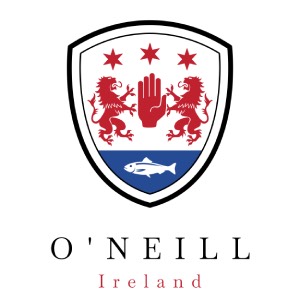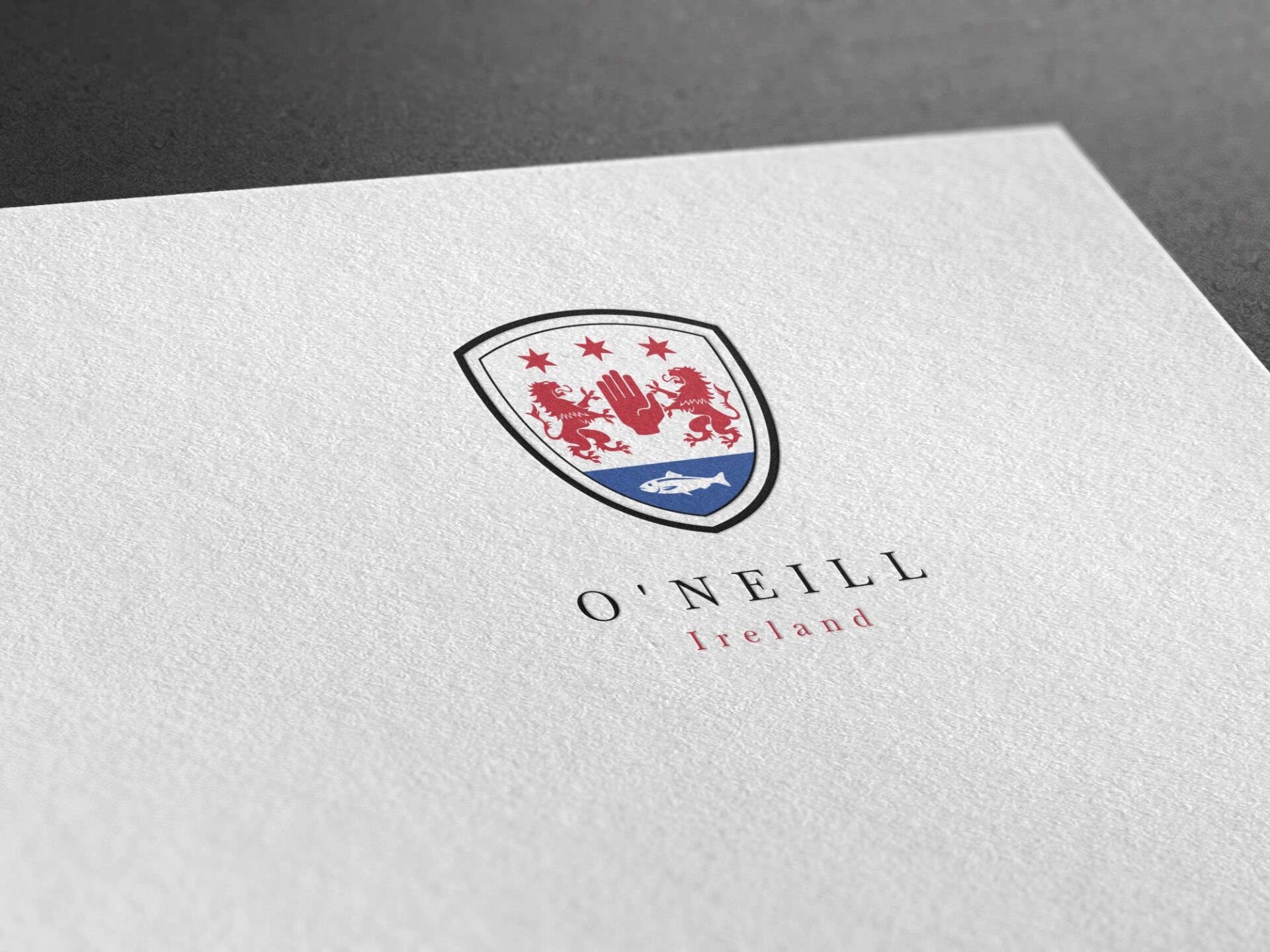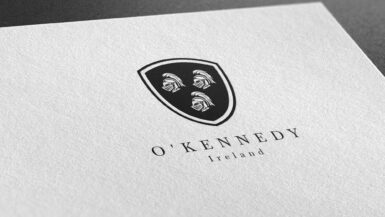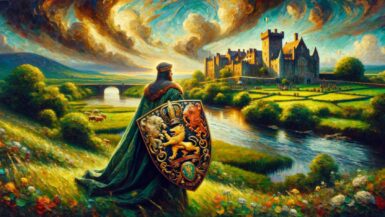The O’Neill surname, rooted in the rich tapestry of Irish history, is among the ten most common surnames in Ireland. The O’Neills trace their lineage back to Niall Noígíallach (Niall of the Nine Hostages), a legendary figure and a High King of Ireland from the 5th Century. Their influence has been significant in shaping the political, cultural, and religious landscape of Ireland.
Etymology and Meaning
O’Neill stems from the Gaelic Ó Néill, meaning “descendant of Niall”. The given name Niall is thought to derive from the Gaelic word ‘niadh’, signifying ‘champion’.
Earliest Known Usage
The earliest recorded usage of the O’Neill surname goes back to the late 9th century when the progeny of Niall Noígíallach started adopting it. The first documented spelling of the family name is that of Maelsechlainn O’Neill, dating back to 1015, during the reign of the High King of Ireland, Brian Boru.
Geographic Distribution
Historically, the O’Neills were rulers of Tyrone, a county in the province of Ulster, Northern Ireland. They held vast territories spanning the entire length of the province, from the western seaboard to the Irish Sea, making them one of the most powerful families in Ireland.
Original Geographic Location
The original geographic location of the O’Neill family is County Tyrone, Ulster province, in the northern part of Ireland. This region was part of the O’Neill dynasty’s realm, a lineage that played a crucial role in Irish history.
Migration Patterns
The O’Neills, like many Irish families, faced significant challenges during the 17th century, particularly during the Cromwellian and Williamite wars. These events, coupled with the economic hardships of the Great Famine in the 19th century, spurred a significant number of O’Neills to emigrate. The majority relocated to North America, with others settling in Australia, New Zealand, and Britain.
Historical Context
Notable Historical Events
The O’Neills were involved in several notable historical events, including the Nine Years’ War (1594-1603), where they fiercely resisted English rule. However, the defeat in this war and the subsequent Flight of the Earls in 1607 marked the end of Gaelic Ireland’s old order.
Involvement in Key Moments in History
The O’Neills have been involved in key moments of Irish history. For instance, Owen Roe O’Neill played a crucial role in the 17th-century Confederate Wars. Later, Terence O’Neill, Prime Minister of Northern Ireland from 1963 to 1969, sought to address discrimination against Catholics, a significant factor leading to the Troubles.
Notable Bearers of the Surname
Famous Individuals
Several famous individuals bear the O’Neill surname. These include Eugene O’Neill, an American playwright and Nobel laureate, and Rose O’Neal Greenhow, a renowned Confederate spy during the American Civil War.
Influential Figures
Influential figures of the O’Neill surname include Paul O’Neill, former United States Secretary of the Treasury, and Tip O’Neill, a long-serving Speaker of the United States House of Representatives.
Variations of the Surname
Spelling Variations
The O’Neill surname has several spelling variations due to the phonetic transcription of the name from Gaelic to English. These include O’Neal, Neal, Neill, Neale, and Nihill.
Regional Differences
The surname O’Neill is ubiquitous in Ireland, but regional differences exist. For instance, the name is most common in Counties Tyrone and Derry in Northern Ireland, and also has a strong presence in County Clare in the Republic of Ireland. Outside Ireland, the name’s spelling can change based on local languages and dialects.
Current Statistics and Distribution
Frequency and Global Distribution
The O’Neill surname is widespread globally due to historical emigration, especially to the United States, Canada, Australia, and the UK. As of the last Irish census, it remains among the top ten most common surnames in Ireland.
Changes Over Time
The distribution of the O’Neill surname has changed over time due to migration patterns. While it remains prevalent in Ireland, particularly in Northern Ireland, the greatest number of people bearing the O’Neill surname currently reside in the United States.
Family Coat of Arms

The O’Neill family crest is a visually striking and symbolically rich heraldic emblem that embodies the family’s history and values. The crest features a white background, known in heraldry as argent, which traditionally symbolizes purity, innocence, peace, and sincerity. This choice of color sets a noble and virtuous tone for the crest, highlighting the family’s commitment to these lofty ideals.
At the bottom of the crest, there is a section of blue, often representing water in heraldic terms. This blue area might symbolize the family’s connection to maritime pursuits or a geographical association with bodies of water. Within this blue field is depicted a fish, a symbol frequently associated with Christianity and abundance, but in a more general heraldic context, it can also signify a seamless navigation through the complexities of life.
Dominating the upper portion of the crest is a red palm, a symbol that is rich with meanings including victory, peace, and martyrdom. The palm’s presence on the crest could signify triumph and spiritual resilience, marking the family’s overcoming of challenges through a steadfast and peaceful demeanor.
Additionally, two red regal lions flank the palm. Lions in heraldry are emblematic of courage, power, and royalty, reflecting the family’s noble stature and their fierce protectiveness of what they hold dear. The red color, known as gules, enhances these attributes by adding connotations of bravery, strength, and valor.
Lastly, the crest includes three red stars, which in heraldic terms often denote celestial goodness, high aspirations, and a noble spirit. The number three could signify completeness and divine perfection, suggesting that the O’Neill family prides itself on a well-rounded and virtuous character.
Together, the elements of the O’Neill family crest — the white background with a blue water section containing a fish, a red palm, regal red lions, and three red stars — create a compelling visual narrative. This narrative highlights a legacy characterized by purity, victory, noble valor, and celestial aspirations, portraying the O’Neill family as both regal and steadfastly virtuous.






Am searching for the Irish settler was John Edward O’Neale 1824 until 1902. He emigrated to South Africa about 1863 and married to a girl at Free States. Need to know more about his father, William John O’Neale born Country Londonderry, Ireland. He married to Esther ?